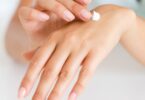In my last two blogs I describe diabetes technologies as moving forward but hint at how you can stay ahead of the curve and provide you with an easy way to determine which food groups affect your blood sugar most, http://valeriegoldstein.wordpress.com/. Today I will describe how you can detect diabetes as early as possible.
Currently your doctor uses blood sugar as a means to diagnose diabetes. A detailed description for diagnosis of various types of diabetes can be found at, http://diabetes.niddk.nih.gov/dm/pubs/diagnosis/.
Fasting Blood Glucose (mg/dL) & Diagnosis
99 or below- Normal
100 to 125- Pre-diabetes
126 or above- Diabetes
However, you can care for yourself before blood sugar levels rise. If you familiarize yourself with the symptoms of diabetes and you understand that you may not experience symptoms early on, you can get help at the earliest stages of diabetes before your blood sugar tests high.
First and foremost if anyone in your family has diabetes, you should be diligent about getting your insulin levels tested no matter what your weight is. You do not have to be overweight to have type 2 diabetes and you may not “feel” any symptoms. Checking insulin levels while doing an Oral Glucose Tolerance Test (OGTT) will track your health much better than current standards of diagnosing diabetes alone. Fasting insulin and insulin levels 1, 2 and 3 hours after eating gives you the best picture of your metabolic health and the earliest way to detect your risk for diabetes.
Second, you should be aware of the symptoms. It may be surprising that the first signs of diabetes may start in the mouth. If you eat foods that are high in carbohydrates, starch and sugar, the saliva surrounding your teeth will have higher amounts of sugar. This can lead to swollen, itchy or bleeding gums, bad breath and a host of other dental complications, http://www.diabetesnsw.com.au/PDFs/About_Diabetes_PDFs/DentalHealth.pdf. Other symptoms include:
• Unintentional weight loss
• Hunger
• Intense thirst
• Frequent urination
• Unexplained fatigue
• moodiness
• Blurred vision
I will explain the importance of checking insulin levels in my next blog. So check in, in a few days.







Selecting a quality pair of socks for diabetes is vital for diabetic foot care.